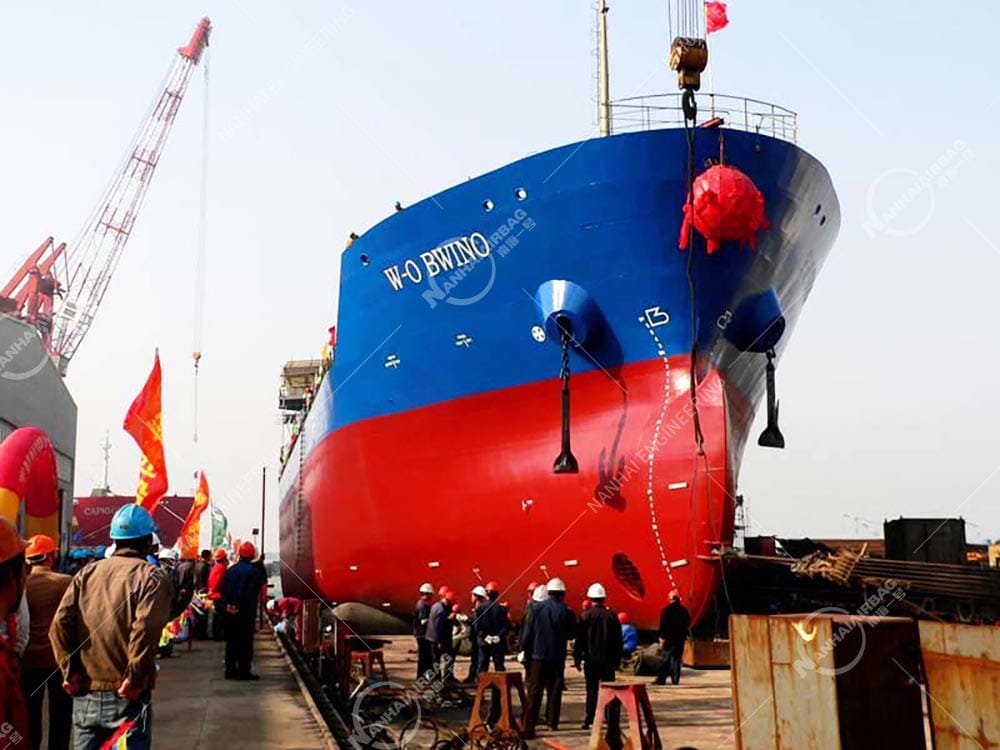Why Asia-Pacific Shipyards Are Adopting Ship Launching Airbags
07/17/2025How Are High-Quality Rubber Fenders Produced?
07/18/2025Green Shipbuilding with Ship Launching Airbags
1. Introduction
Ship launching airbags are becoming a smart, green alternative to traditional ship launching methods. They help shipyards save time, reduce labor, and lower carbon emissions. This article explains how airbags support eco-friendly shipbuilding and why more companies are choosing them.
2. What Are Ship Launching Airbags?
Ship launching airbags are large inflatable rubber tubes made of several layers of tire cord and rubber. Workers place them under the ship’s hull to roll the ship into the water. This method started in China in the 1980s. Today, airbags can safely launch ships weighing up to 75,000 tons.

3. How Airbags Save Time and Labor
- No need for big structures: Airbags replace dry docks and steel rail systems. They reduce the need for heavy equipment and complex ground works.
- Fast and flexible: Workers can set up airbags in different layouts depending on the ship size. This flexibility shortens the launch schedule.
- Reusable: One set of airbags can launch many ships. They are easy to clean, store, and maintain.
4. Lower Cost and Carbon Emissions
- Save on construction: Building a dry dock or launch rail is expensive. Airbags cut that cost by using simple tools and minimal setup.
- Lower carbon footprint: Airbag launches need less concrete, steel, and fuel. This means less CO₂ during construction.
- Cleaner for the environment:
- Traditional dry docks use a lot of grease and oil on sliding tracks. This oil often leaks into the water and harms marine life.
- When heavy ships move over rails, the friction can heat the grease until it smokes or even catches fire. This creates a bad smell and pollutes the air.
- Airbags do not need oil or grease, so they prevent both water and air pollution.
5. Safe and Adaptable
- Strong structure: Most airbags have 4 to 6 layers of cord material. They can carry very heavy ships without bursting.
- Used for many ship types: From small fishing boats to large cargo ships, airbags work for many sizes and shapes.
- International standard: Most airbags follow ISO 14409, which sets safety and performance rules.
6. Real World Examples – Ship Launching Airbags in use
- 10,000-ton cargo ship: One project launched this large ship in less time with fewer workers.
- Historical ship salvage: Airbags helped safely recover the famous “Nanhai No.1” sunken ship.
- 75,000-ton commercial vessel: This record-breaking launch showed the strength and scale of airbag technology.
7. Choosing and Using the Right Ship Launching Airbags
- Size and number: Choose airbags based on ship weight, width, and hull shape.
- Material and layers: Most airbags have diameters between 0.8 m and 2.5 m. Choose more layers for heavier ships.
- Ground preparation: The slipway slope and surface should match the pressure needs of the airbags.
- Safety tips:
- Always test air pressure before launch.
- Use backup airbags.
- Control the release speed to avoid sudden drops.
8. How the Launch Process Works
- Plan the launch and choose airbags.
- Prepare the ground and place the airbags.
- Inflate the airbags and align the ship.
- Pull or push the ship into the water slowly.
- Recover, clean, and store the airbags for future use.
This process is simple, quick, and requires fewer people. It also avoids many common risks.
9. Green Shipyards and the Future
- Smarter airbags: New designs use stronger materials and sensors to track pressure and stress.
- Support low-carbon goals: Airbags help shipyards meet rules on carbon emissions and energy use.
- Market growth: The global airbag market could reach $1.68 billion by 2025. Asia-Pacific leads the growth.
10. Conclusion
Ship launching airbags are a smart, green, and cost-effective solution. They save time, reduce labor, and avoid the pollution caused by traditional launching methods. More shipyards are turning to airbags to meet the demands of modern, eco-friendly shipbuilding.
